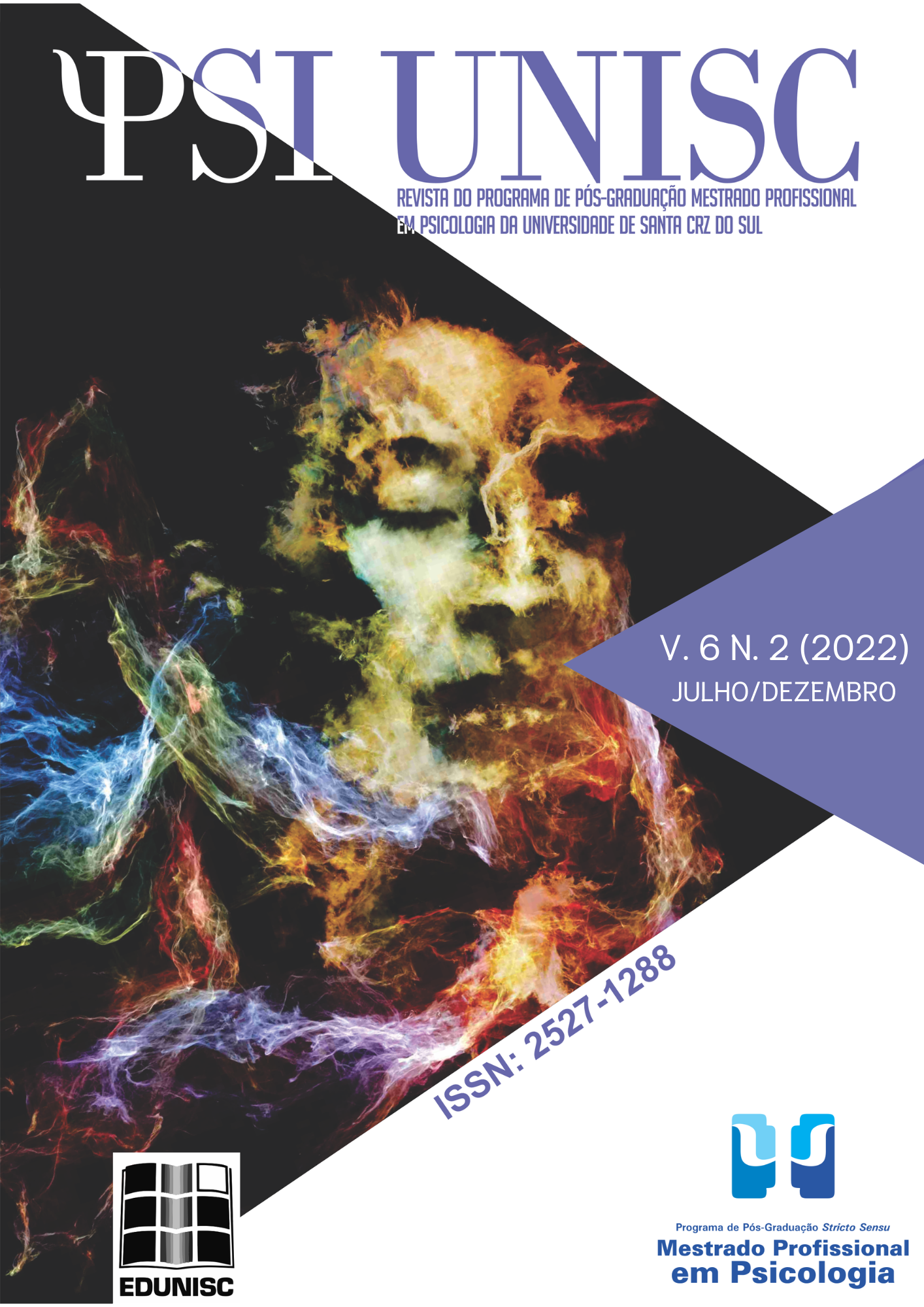Revisão por pares no universo acadêmico: Diretrizes e sugestões para pós-graduandos
DOI:
https://doi.org/10.17058/psiunisc.v6i2.16990Palavras-chave:
Revisão por pares, Manuscritos, Publicação acadêmicaResumo
O processo de revisão por pares (peer review) de novos manuscritos garante a qualidade de estudos publicados na grande maioria dos periódicos científicos, assegurando o avanço contínuo da ciência. Contudo, pouco treinamento é dado à pós-graduandos em como fazer uma revisão, frequentemente de forma informal. O presente manuscrito descreve o processo de publicação e sugere uma revisão dividida em três partes: (a) um parágrafo inicial, (b) uma breve sinopse, e (c) sugestões ao artigo. Assim, busca-se facilitar o processo de publicação de manuscritos e aprimorar a qualidade de trabalhos publicados na literatura nacional na área de psicologia.
Downloads
Referências
Araújo, C. G. S. (2012). Revisão por pares: um processo científico em constante aprimoramento. Arq Bras Cardiol, 98(2), e32-e35.
Chwalisz, K. (2003). Evidence-Based Practice: A framework for twenty-first-century scientist-practitioner training. The Counseling Psychologist, 31(5), 497-528.
Costa, A. P. (2016). Processo de construção e avaliação de artigos de índole Qualitativa: possíveis caminhos? [editorial]. Rev Esc Enferm USP, 50(6), 890-891.
Cooper, M. L. (2009). Problems, Pitfalls, and Promise in the Peer-Review Process: Commentary on Trafimow & Rice (2009). Perspectives on Psychological Science, 4(1), 84-90.
Davyt, A., & Velho, L. (2000). A avaliação da ciência e a revisão por pares: passado e presente. Como será o futuro?. História, Ciências, Saúde-Manguinhos, 7(1), 93-116.
hooks, b. (2015). Feminism is for everybody: Passionate Politics. Boston, MA: South End Press. 2nd Ed.
Jenal, S.; Vituri, D. W.; Ezaías, G. M.; Silva, L. A.; & Caliri, M. H. L. (2012). Processo de revisão por pares: uma revisão integrativa de literatura. Acta Paul Enferm., 25(5), 802-808.
Job, I.; Mattos, A. M.; & Trindade, A. (2009). Processo de revisão pelos pares: por que são rejeitados os manuscritos submetidos a um periódico científico?. Movimento, 15(3), 35-55.
Lederman, N. G., & Lederman, J. S. (2017). The future of peer-review. Joirnal of Science Teacher Education, 28(3), 219-221.
Lovejoy, T. I.; Revenson, T A.; & France, C. R. (2011). Reviewing manuscripts for peer-review journals: a primer for novice and seasoned reviewers. Annals of Behavioral Medicine, 42, 1-13.
Minayo, M. C. S., Diniz, D., & Gomes, R. (2016). O artigo qualitative em foco. Ciência e Saúde Coletiva, 21(8), 1-2.
Nickerson, R. S. (2005). What Authors Want From Journal Reviewers and Editors. American Psychologist, 60(6), 661-662.
Omote, S. (2005). Revisão por pares na Revista Brasileira de Educação Especial. Revista Brasileira de Educação Especial, 11(3), 323-334.
Silvia, P. J. (2007). How to write a lot: a practical guide to productive academic writing. Washington: American Psychology Association.
Suls, J., & Martin, R. (2009). The Air We Breathe: A Critical Look at Practices and Alternatives in the Peer-Review Process. Perspectives on Psychological Science, 4(1), 40-50.
Downloads
Publicado
Como Citar
Edição
Seção
Licença
A submissão de originais para este periódico implica na transferência, pelos autores, dos direitos de publicação impressa e digital. Os direitos autorais para os artigos publicados são do autor, com direitos do periódico sobre a primeira publicação. Os autores somente poderão utilizar os mesmos resultados em outras publicações indicando claramente este periódico como o meio da publicação original. Em virtude de sermos um periódico de acesso aberto, permite-se o uso gratuito dos artigos em aplicações educacionais e científicas desde que citada a fonte conforme a licença CC-BY da Creative Commons.




